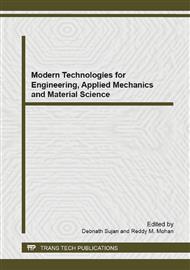p.57
p.62
p.69
p.74
p.81
p.86
p.91
p.97
p.102
Finite Element Prediction of Mechanical Behaviour under Bending of Honeycomb Sandwich Panels
Abstract:
This paper outlines a finite element procedure for predicting the mechanical behaviour under bending of sandwich panels consisting of aluminium skins and aluminium honeycomb core. To achieve a rapid and accurate stress analysis, the sandwich panels have been modelled using shell elements for the skins and the core. Sandwich panels were modelled by a three-dimensional finite element model implemented in Abaqus/Standard. By this model the influence of the components on the behaviour of the sandwich panel under bending load was evaluated. Numerical characterization of the sandwich structure, is confronted to both experimental and homogenization technique results.
Info:
Periodical:
Pages:
81-85
Citation:
Online since:
June 2014
Authors:
Price:
Сopyright:
© 2014 Trans Tech Publications Ltd. All Rights Reserved
Share:
Citation:


